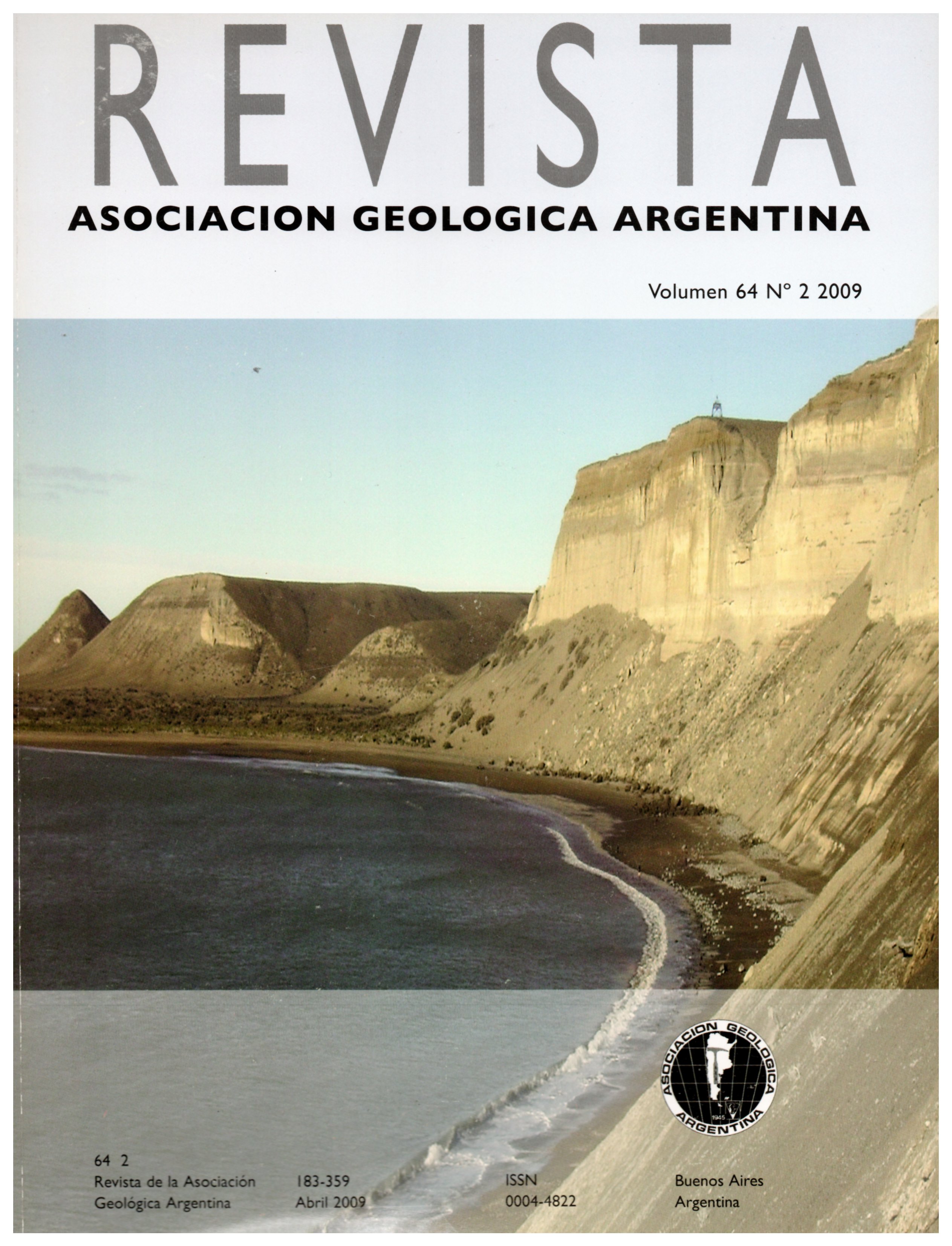Geology of the northern sector of the Cura Mallín Basin in the Lagunas de Epulaufquen, Neuquén
Main Article Content
Abstract
The exposed sequences in the eastern Andes around the Argentinian-Chilean boundary between 36º40´-50´S, 71º-71º10´O are associated with two contrasting genesis. On one hand, the lowest sequences have been accumulated in an extensional intra-arc basin, where synrift units from the Lumabia Member of the Cura Mallín Basin are overlied by sequences associated with thermal cooling of the Arroyo Pincheira Member. On the other hand, the upper sequences of the Cajón Negro Formation represent a volcanic arc that were superimposed to a previously inverted intraarc basin. There are three compressive phases in the area. The two first are associated to thin-skinned deformation (Early and Middle Miocene), while the last one to thick-skinned deformation related to the tectonic inversion of the Cura Mallín intraarc basin (Late Miocene). Geochemical studies suggest that a major change in crustal thickening was reached between Arroyo Pincheira Member and Cajón Negro Formation. This last phase of contraction produced most of the Andean structures at the eastern slope of the high Andes around 36º40´-50´S.
Article Details

This work is licensed under a Creative Commons Attribution-NonCommercial 4.0 International License.
Nota de copyright
Los autores conservan los derechos de autor y garantizan a la revista el derecho de ser la primera publicación del trabajo licenciado según una licencia de atribución Creative Commons que permite a otros compartir el trabajo con el reconocimiento de la autoría y de la publicación en la que se publicó por primera vez.
Declaración de privacidad
Los nombres y direcciones de correo electrónico introducidos en esta revista se usarán exclusivamente para los fines declarados por esta revista y no estarán disponibles para ningún otro propósito u otra persona.

